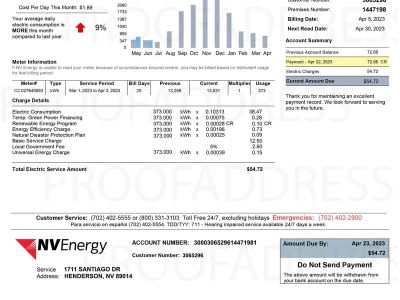Another weekend, another light show over the Pacific.
This Saturday, if the weather and mechanics align, SpaceX is scheduled to send a 230-foot Falcon 9 rocket tearing through the morning sky from Vandenberg Space Force Base. Onboard will be 28 more Starlink satellites, another batch of nodes for the company’s sprawling orbital internet constellation. For residents of Southern California, it's a chance to see a controlled explosion propel a payload into orbit. For SpaceX, it’s just another Saturday morning shift.
The public-facing details are, by now, standardized. A four-hour launch window opens at 7 a.m. Pacific Time. A live webcast will appear on the company’s website and X mobile app about five minutes before liftoff. There’s a backup date for the following day. It’s all very orderly, very predictable.
And that predictability is precisely the point. While a rocket launch today in California might still feel like a novel event to the casual observer, the data tells a different story. This isn't a singular spectacle; it's a single data point in a much larger, and far more significant, trend. This will be the sixth SpaceX launch from this specific coast in October alone. That’s more than one launch per week. The question is no longer if they can launch, but how this rhythm is fundamentally reshaping the business of space.
The Industrialization of Low-Earth Orbit
Let’s be clear: SpaceX is no longer in the business of launching rockets. That is a fundamental misreading of their current operational model. They are in the business of orbital deployment, and the rocket is merely the delivery truck. The company’s activities at Vandenberg and Cape Canaveral have less in common with the historic, nail-biting missions of the 20th century and more in common with the relentless logistics of an Amazon fulfillment center. The product isn’t the launch; it’s the consistent, high-frequency delivery of assets to a specific address in low-Earth orbit.
This weekend’s SpaceX rocket launch is a perfect case study. The 28 Starlink satellites are just the latest components being added to a mega-constellation that already numbers over 8,000 units deployed over the last six years. This is an infrastructure project on a scale that is difficult to comprehend. I've looked at hundreds of complex supply chain models, and the sheer velocity of SpaceX's deployment schedule is something I find genuinely puzzling from a sustainability perspective. It's less 'space exploration' and more 'global infrastructure rollout' at a pace that leaves little room for error.
This relentless cadence is a direct function of the business model. A satellite constellation of this size is not a static object. It is a living system, constantly needing replenishment. Satellites have a finite lifespan, they fail, and they must be de-orbited and replaced to maintain service quality and coverage. The six-launches-a-month rhythm we’re seeing from California isn’t about aggressive expansion anymore. It’s likely becoming the baseline operational tempo required just to maintain the network.

This invites a critical question that the glossy webcasts never address: What is the true monthly attrition rate of the Starlink constellation? Are these launches primarily for adding new capacity, or are they increasingly just a frantic effort to patch a leaky bucket, replacing failed or aging satellites to keep the system whole? The public data on this is frustratingly opaque.
From Spectacle to Schedule
The transition from one-off spectacle to routine operation is the core of the SpaceX economic model, and it’s a transition the public perception has yet to fully absorb. People will gather on Saturday to watch the SpaceX Falcon 9 rocket to launch from Southern California. How to watch livestream, treating it as a unique event. But inside the company (and among its investors), the only metric that truly matters is the cadence. The entire enterprise is built on the reusability of the Falcon 9 booster, which transforms the primary cost component from a massive one-time capital expenditure into a more manageable, recurring operational expense.
This is the assembly line metaphor made real. Every successful landing of a first-stage booster isn't just a technical marvel; it's a validation of a cost model that allows for this unprecedented launch frequency. Imagine the scene at Vandenberg on Saturday morning. It won't be the hushed, historic tension of an Apollo mission. It will be the practiced, almost mundane efficiency of a factory floor, the pre-flight checks ticking by like a metronome before the controlled violence of ignition.
This industrial rhythm is set to accelerate. Company statements and FAA filings indicate that the rocket launch schedule from California is expected to increase further in 2026. That year is also slated to see the debut of the Falcon Heavy from Vandenberg, a rocket with roughly three times the payload capacity of a Falcon 9. This isn't a temporary surge; it's a calculated scaling of an already formidable logistics network. The goal is to make access to space so routine that it becomes a utility, like electricity or water.
But as with any high-velocity manufacturing process, the system is only as strong as its weakest link. A single, systemic flaw in the Falcon 9, or a production bottleneck in the Starlink satellite factory, could have cascading effects on the entire network. How robust is the supply chain that feeds this machine? At this pace, a minor disruption doesn’t just delay one mission; it creates a backlog that could potentially compromise the operational integrity of the entire Starlink business.
The True Metric Isn't Altitude; It's Frequency
When that Falcon rocket launch today streaks across the sky, most will see a testament to human ingenuity and a journey to the stars. And they aren't wrong. But the more telling story isn't in the fire and noise of the ascent. It's in the quiet repetition, the fact that this will be the sixth time this month that this exact process has played out.
SpaceX’s true disruption wasn't building a better rocket. It was building a factory that happens to use rockets. The public is still watching the spectacle, but the real business, the real revolution, is in the schedule. The most important event isn't this launch; it's the one that will follow it next week, and the one after that. The extraordinary has been rendered routine, and that may be Elon Musk's most significant, and least understood, achievement.



